Photo
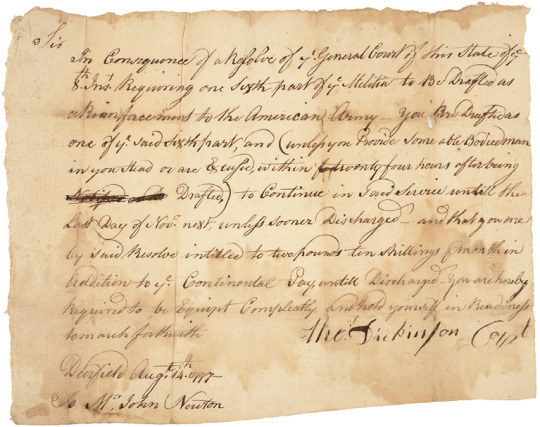
Draft notice for the Continental Army, 8/14/1777.
File Unit: Revolutionary War Pension and Bounty Land File of John Newton, ca. 1800 - ca. 1912
Series: Case Files of Pension and Bounty-Land Warrant Applications Based on Revolutionary War Service, ca. 1800 - ca. 1912
Record Group 15: Records of the Department of Veterans Affairs, 1773 - 2007
Transcription:
Keep reading
#archivesgov#august 14#1777#1700s#revolutionary war#american revolution#military#the draft#conscription#age of sail#today in history#american history#amrev history
55 notes
·
View notes
Text
Gabriel Bray (1750-1823)
Gabriel Bray (1750-1823), was second lieutenant of the 44-gun ‘Pallas’ under Captain the Hon. William Cornwallis (1744-1819), who later became a well-known admiral, on two voyages (1774-77) to report on British interests in West Africa, including the slave trade. The dated drawings refer only to the first of these, from December 1774 to September 1775, though a few may be from the second. Here are a sampling of a few of the drawings and an oil painting.
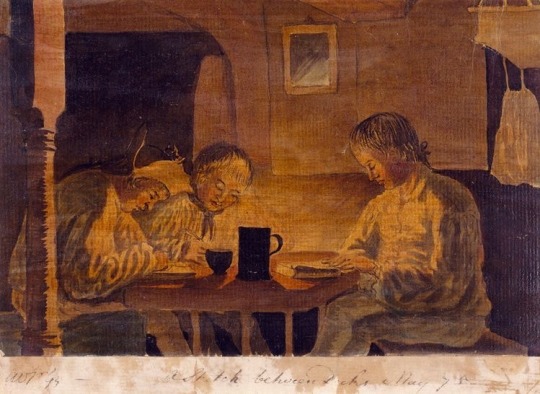
This drawing was done on the 'Pallas's' transatlantic crossing from Africa to Barbados, 4 April - 31 May 1775. The scene is likely to be in the ship's cockpit a lower-deck space, with little natural light, that was the home of midshipmen and master's mates. There they slept, ate and - as shown here - relaxed and studied by candlelight. One of their hanging cots, with a draw-string bag for personal items suspended at its head, can be seen in the top right corner, hanging parallel to the ship's side, as indicated by the positions of the hanging knee and deck beam, top centre. These were the living conditions that 'young gentlemen' first met when they went to sea and it is likely that one or more of those shown are either the Hon. Thomas Pakenham, or Lord Charles Fitzgerald, two of the aristocratic protégés of the ship's captain, the Hon. William Cornwallis.

A view on the 'Pallas's' fo'c'sle at sea, looking forward over one of her chase guns, with the starboard clew of her fore-course visible above her bowsprit. It is possible the seaman is a forward lookout, or just relaxing, and there is another sitting out on the spritsail yard to starboard with a harpoon, possibly to spear dolphin. The scene suggests light weather conditions running down into lower latitudes on the way to Africa. The name “Pallas” is carved or painted on the quoin (breech wedge) of the gun.
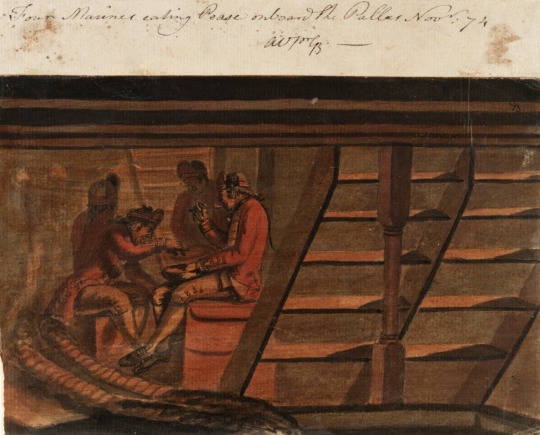
A drawing of four fully uniformed marines - probably a 'mess' of four - below an upper deck hatchway on the 'Pallas'. The two visibly eating are seated on sea chests and the meal could be pease pottage (or pudding) - a porridge of dried split peas baked with water and seasoning. The drawing was, however, probably made while the "Pallas' was at Portsmouth.

“Self portrait of Gabriel Bray”. This is one of two such self-portraits in the Bray album, the other showing him painting in watercolours (and probably using the same mirror). Both also show the long hair which men of the time could favour, usually tied back into a queue (pigtail) with ribbon among sailors (and soldiers) and powdered white in formal circumstances.

“Under the Pallas’ half-deck.” This is a still-life study aft on the 'Pallas, with Marines' drums and leather buckets hoisted up out of the way and a gun and (probably) a water cask secured for sea. The gun has what is probably a lead or hardened leather cover lashed over its touch-hole.

“Two small Royal Navy frigates.” The ships mount about 11 guns a side, suggesting they are small firgates of about 26-28 guns. The ensigns of both lack the blue and Scottish saltire element in the upper quadrant, which may just be an unfinished detail. A naval lugger (possibly a launch or longboat) is in the foreground. Since Bray has signed the drawing with his usual 'ad vivum' abbreviation, it may be a scene he observed off Africa during the 'Pallas' voyage, or perhaps one closer to home just finished at sea later: for he clearly did not do everything strictly from life. The ship on the left flies the red ensign often signifying one on independent commission, while the white one suggests the frigate on the right is from a command under a flag officer of the white squadron. This vessel also shows a rare example of the use of a long square driver (sail) hoisted in a following wind to the peak of the lateen mizzen yard, which normally carries a fore-and aft sail. Neither ship appears large enough to be the 'Pallas'.

“A ship hove down and burning off.” This was for a long time the only known surviving oil painting by Gabriel Bray (1750-1823), though others have now (2020) appeared on the market. The vessel is probably naval, since a number of guns have been landed on the quay prior to her being hove down for breaming, which is what is being shown. A small naval sloop appears to the right, with a further vessel beyond with only lower masts standing. This therefore appears to be a fairly substantial repair facility and it may be a scene in the West Indies, to which Bray made two voyages via the West African coast when second lieutenant of HMS 'Pallas' in 1774-76. Between 1774-77 the 'Pallas' made a series of voyages to the West African coast, the purpose of which was to survey and report on the forts and factories then under British control.
#hms pallas#william cornwallis#age of sail#naval art#maritime art#Gabriel Bray#Gabriel bray artwork#west indies#africa#napoleonic era#napoleonic wars#french revolution#royal navy history
14 notes
·
View notes
Text
On this day…
In 1832, naturalist Charles Darwin arrived via HMS Beagle at Rio De Janeiro.

Charles Darwin

A drawing of the Sugarloaf Mountains in Rio De Janiero
4 notes
·
View notes
Text
Today in history-
In 1968, Martin Luther King, Jr., a leader of the American civil rights movement who was in Memphis, Tennessee, to support a strike by the city's sanitation workers, was assassinated by James Earl Ray.

The evening of King’s murder, a Remington .30-06 hunting rifle was found on the sidewalk beside a rooming house one block from the Lorraine Motel. During the next several weeks, the rifle, eyewitness reports, and fingerprints on the weapon all implicated a single suspect: escaped convict James Earl Ray. A two-bit criminal, Ray escaped a Missouri prison in April 1967 while serving a sentence for a holdup. In May 1968, a massive manhunt for Ray began. The FBI eventually determined that he had obtained a Canadian passport under a false identity, which at the time was relatively easy.
On June 8, Scotland Yard investigators arrested Ray at a London airport. He was trying to fly to Belgium, with the eventual goal, he later admitted, of reaching Rhodesia. Rhodesia, now called Zimbabwe, was at the time ruled by an oppressive and internationally condemned white minority government. Extradited to the United States, Ray stood before a Memphis judge in March 1969 and pleaded guilty to King’s murder in order to avoid the electric chair. He was sentenced to 99 years in prison.
Three days later, he attempted to withdraw his guilty plea, claiming he was innocent of King’s assassination and had been set up as a patsy in a larger conspiracy. He claimed that in 1967, a mysterious man named “Raoul” had approached him and recruited him into a gunrunning enterprise. On April 4, 1968, he said, he realized that he was to be the fall guy for the King assassination and fled to Canada. Ray’s motion was denied, as were his dozens of other requests for a trial during the next 29 years.
*I don’t normally post outside of the area of my interest. But I think this is an important event in American history that we should never forget. *
4 notes
·
View notes
Text
Today in history-
In 1968, Martin Luther King, Jr., a leader of the American civil rights movement who was in Memphis, Tennessee, to support a strike by the city's sanitation workers, was assassinated by James Earl Ray.

The evening of King’s murder, a Remington .30-06 hunting rifle was found on the sidewalk beside a rooming house one block from the Lorraine Motel. During the next several weeks, the rifle, eyewitness reports, and fingerprints on the weapon all implicated a single suspect: escaped convict James Earl Ray. A two-bit criminal, Ray escaped a Missouri prison in April 1967 while serving a sentence for a holdup. In May 1968, a massive manhunt for Ray began. The FBI eventually determined that he had obtained a Canadian passport under a false identity, which at the time was relatively easy.
On June 8, Scotland Yard investigators arrested Ray at a London airport. He was trying to fly to Belgium, with the eventual goal, he later admitted, of reaching Rhodesia. Rhodesia, now called Zimbabwe, was at the time ruled by an oppressive and internationally condemned white minority government. Extradited to the United States, Ray stood before a Memphis judge in March 1969 and pleaded guilty to King’s murder in order to avoid the electric chair. He was sentenced to 99 years in prison.
Three days later, he attempted to withdraw his guilty plea, claiming he was innocent of King’s assassination and had been set up as a patsy in a larger conspiracy. He claimed that in 1967, a mysterious man named “Raoul” had approached him and recruited him into a gunrunning enterprise. On April 4, 1968, he said, he realized that he was to be the fall guy for the King assassination and fled to Canada. Ray’s motion was denied, as were his dozens of other requests for a trial during the next 29 years.
*I don’t normally post outside of the area of my interest. But I think this is an important event in American history that we should never forget. *
4 notes
·
View notes
Text
On this day…
In 1581, Francis Drake was knighted aboard the Golden Hind by Queen Elizabeth I at Deptford.

Sir Francis Drake
#age of sail#naval history#royal navy#history#queen Elizabeth I#knighthood#sir francis drake#golden hind#1581
2 notes
·
View notes
Text

Thanks to the dedication and perseverance of William Wilberforce for 20 years on the 25th March 1807, The Slave Trade Act becomes law, abolishing the slave trade in the British Empire. God Bless William Wilberforce!!
3 notes
·
View notes
Text
Yes… I am alive….
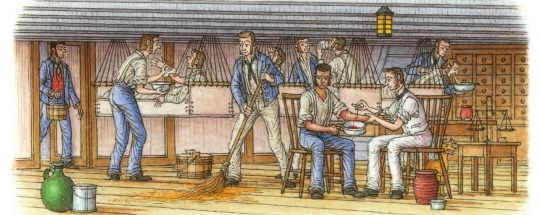
I would like to thank ALL OF YOU [THE WHOLE LOT OF YOU] who have sent me messages over the past two weeks asking about my wellbeing.
To answer all the questions at once:
1) I am NOT dead. I am alive. Which is the the opposite of that.
2) I have not quit Tumblr, or this blog.
3) I have not stopped researching, writing, or teaching.
4) Naval History is still my passion.
I was hospitalized for a time and had a surgery. It was successful and I’m back at home now and recovering. I am almost back to 100%; at that time I will go back to the grindstone!
Again, thank you so much for all the messages, I was unaware I had so many concerned followers. Cheers!

6 notes
·
View notes
Text
Midshipman Monday


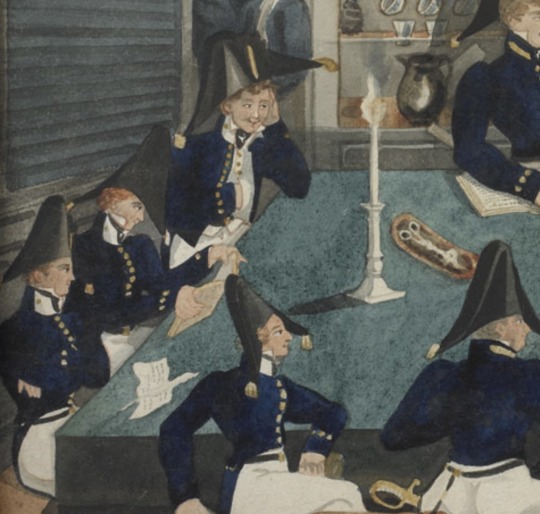

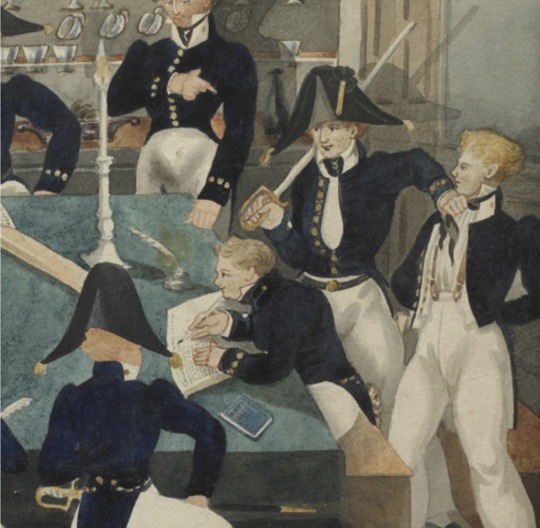
“Court Marshall [sic] in the Starboard Cock Berth”
Captain Samuel Thornton, RN
these paintings are most always incorrectly cited as being done by “Anglo-American School” which just usually means that they are attributed to an unknown artist that does not have a known body of work. In this case, these works were signed by the artist: Thornton, 1829.

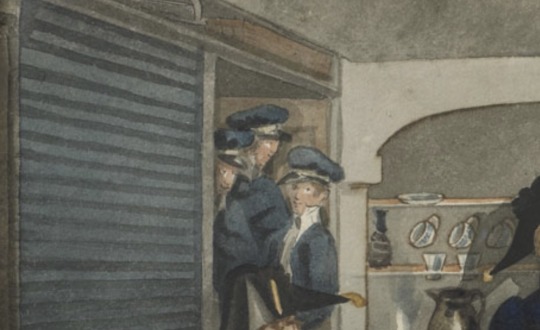



“Cockpit Berth in a Lee Lurch”
Captain Samuel Thornton, RN
these paintings are most always incorrectly cited as being done by “Anglo-American School” which just usually means that they are attributed to an unknown artist that does not have a known body of work. In this case, these works were signed by the artist: Thornton, 1829.
#age of sail#midshipman monday#naval art#Samuel Thornton#Royal Navy#Royal Navy captain#captain#naval history#history#Napoleonic era#midshipman’s berth#court martial
10 notes
·
View notes
Text
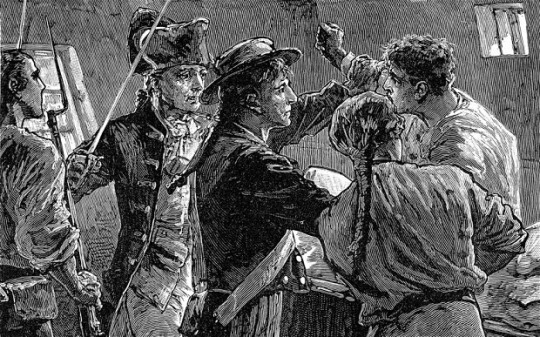
“Mutiny of the crew of the Bounty, 1789."
Lieutenant William Bligh seized in his cabin by the mutineers, led by Fletcher Christian.
#age of sail#naval history#naval art#mutiny of the bounty#HMS Bounty#1789#breadfruit#Fletcher Christian#William Bligh#mutiny#black bloody mutiny
2 notes
·
View notes
Text
Captain George Farmer
Captain Farmer was once commander to a young Midshipman Horatio Nelson when he was serving on board the HMS Seahorse 1773-1776 (Nelson left the Seahorse in March of 1776 with orders to HMS Dolphin. Captain Farmer remained there until June of 1777.
Captain Farmer was killed in action on 6 October 1779 during an action with the French Frigate Surveillante.
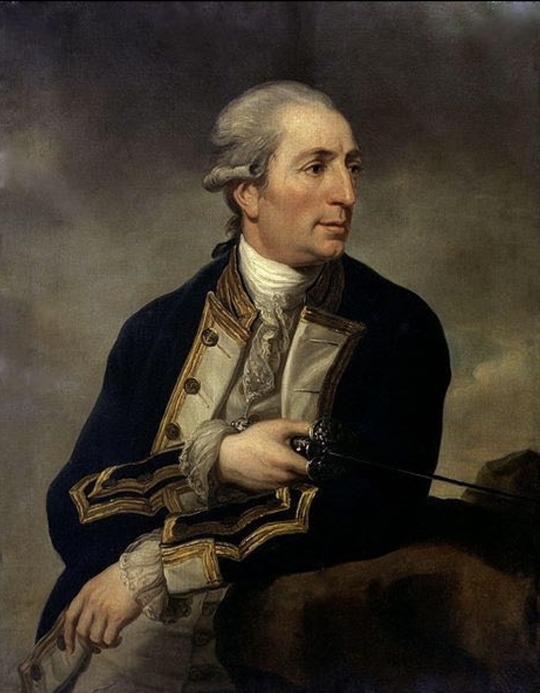


2 notes
·
View notes
Text

“Heart of Oak"
Bowles & Carver
Woodcut of a Royal Navy Lieutenant
4 notes
·
View notes
Text
Admiral Richard “Black Dick” Howe

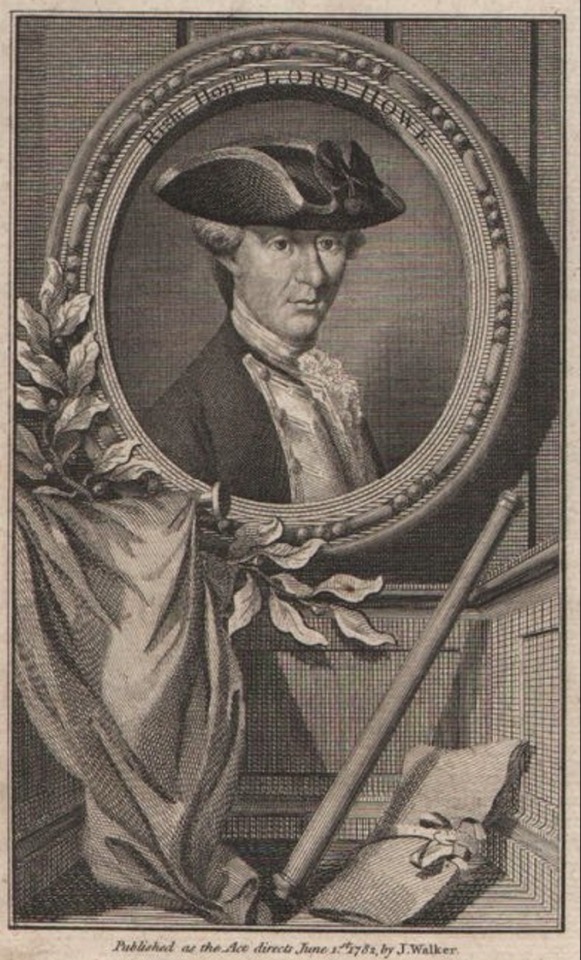

#age of sail#naval history#royal navy#naval portraits#american revolution#admiral richard howe#lord richard howe#naval officer#naval officer portrait#naval art#naval portrait
2 notes
·
View notes
Text

“The Wreck of the Centaur, 1782: Captain Inglefield and survivors getting away in a pinnace."
James Northcote
#age of sail#naval history#naval art#James northcote#wreck of the centaur#captain inglefield escapes#shipwreck#royal navy
0 notes
Text

“Captain Loch bowing before Queen Adelaide on the poop of HMS Hastings."
Oswald Borland
This scene depicts Captain Loch bowing before Queen Adelaide on the poop deck of His Majesty’s Ship HASTINGS. Below, on the quarterdeck, a Royal Guard stands near the helm, which is being manned by crew members.
Queen Adelaide was Queen Consort of the United Kingdom and Hanover from 26 June 1830 to 20 June 1837 as the wife of King William IV.
#age of sail#royal navy#naval history#naval art#Oswald Borland#Queen Adelaide#King William IV#HMS Hastings
4 notes
·
View notes
Text
Chesapeake v. Shannon


Left: Captain Sir Philip Bowes Vere Broke of the Shannon
Right: Captain James Lawrence late of the Chesapeake

"Boarding the Chesapeake."
Jehoshaphat Aspin
A British rendering of the boarding of USS Chesapeake by sailors of HMS Shannon. It highlights the largely untrained crew of the Chesapeake remained below deck.

“Boarding of the Chesapeake by the Crew of the Shannon"
Alonzo Chappel
#age of sail#naval art#Jehoshaphat Aspin#royal navy#naval history#shannon vs. Chesapeake#boarding the Chesapeake#Alonzo Chappel#naval battle#war of 1812#Captain Philip BV Broke#Captain James Lawrence#us navy
3 notes
·
View notes
Text

“The Retired Commodore”
E. H. Landseer, pencil drawing
A naval officer and his female companion are greeted by a captain who raises his glass and doffs his hat to them.
1 note
·
View note